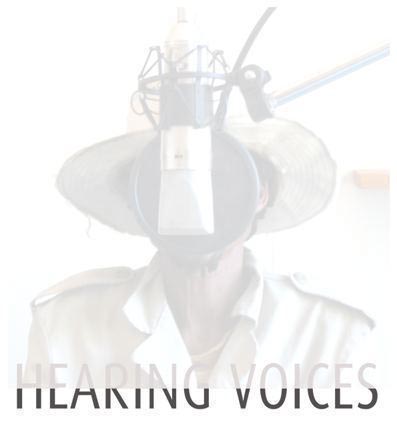|
Through his research and practise
in Botswana, recording click language speech by individuals who collaborate
as performers at the beginning of a process, Wynne constructs an experience
that flickers on the boundaries between speech and sound, and the various
levels of meaning that can be derived from human communications. Simultaneously,
the work alerts the perceiver to the beauty of language and its potential
as a plastic medium, to specifics and generalities, to political and
economic realities, and to the troubled, yet fruitful connections that
can be nurtured in spite of an intimidating geographical, linguistic,
cultural, and technological divide.
David
Toop
Foreword to Hearing Voices
Academic and sound artist John Wynne provides an excellent example of a creative practice of 'responsible engagement with other cultures' in his sound-animated photographs of speakers of endangered languages Hearing Voices. Here the artist avoids a facile politics of alterity - what art critic Hal Foster denounced as over-identification turning into appropriation of the other - by using a number of devices that 'frame the framer'. This reveals the asymmetries and the fraught politics at work in representation and, crucially, provides some contextualization, a feature usually absent in relational art.
Chiara de Cesari
Review of Between Art and Anthropology in Journal of Museum Ethnography (2012) |
|
|
|
Hearing Voices is a body of work based on highly endangered 'click languages' spoken by the indigenous Khoi and San peoples in the Kalahari Desert. The project includes an 8-channel photographic sound installation and an award-winning half-hour composed documentary for BBC Radio 3 described as "a capricious sound world where aural objects shift and surprise" (Resonance Magazine).
Originally designed to accompany the exhibition, Hearing Voices: Speakers/Languages is an interactive app containing sound recordings, photographs, interviews, maps and information.
Updated in 2014 to accompany Volume 12 of Language Documentation and Description, the app includes a foreword by David Toop and recordings of two click-language choirs. The has been used by the Working Group for Indigenous Minorities in Southern Africa to assist in the struggle for rights and recognition of their languages and cultures.
An article by John about working with his recordings from Africa was published in the book Sonic Geography Imagined and Remembered. His presentation at 'Fieldworks: dialogues between art and anthropology' at TATE Modern in London led to a chapter in Between Art and Anthropology: Contemporary Ethnographic Practice, edited by Arnd Schneider and Chris Wright. John's article 'When is a Click not a Glitch?' was commissioned for the book Sound Art edited by Anna Colin and Tobi Maier. Language Ecology and Photographic Sound in the McWorld was published in the journal Organised Sound.
| |
